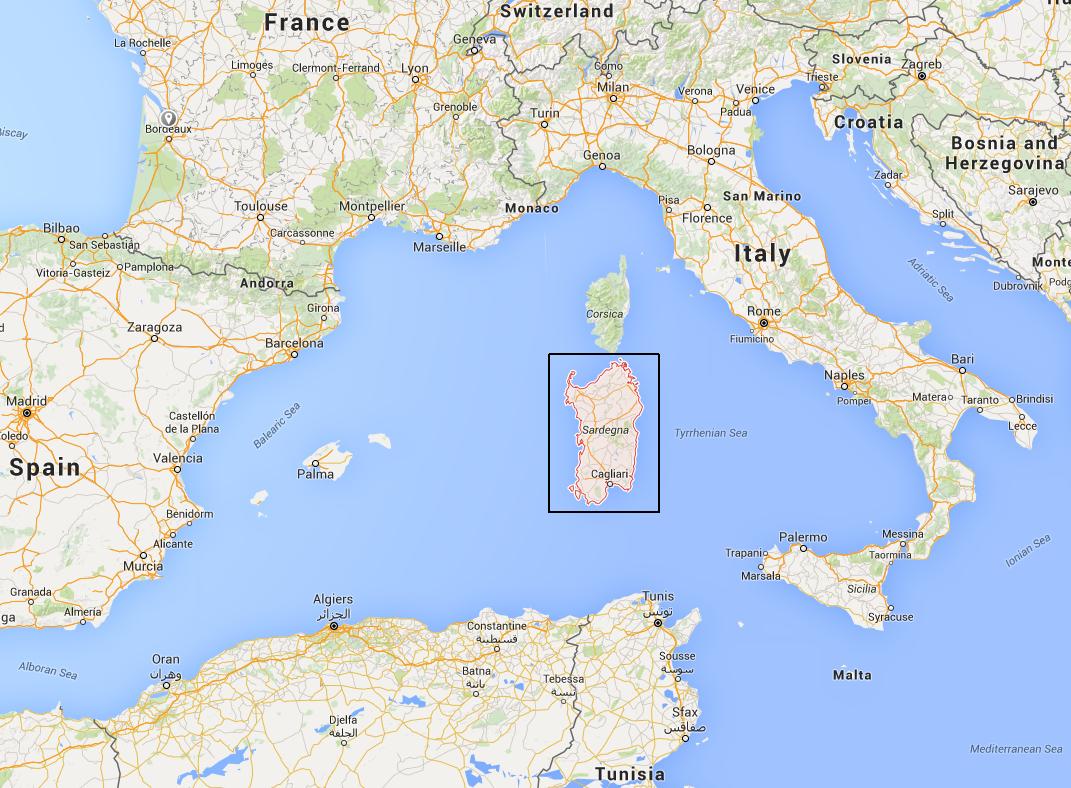Sardinia

Sardinia is a fascinating island with a rich cultural and natural heritage. Sardinia is located in the Mediterranean Sea. It has beautiful beaches with white sand, or even pink to gold coloured sand; splendid panoramic views on bays; the water of the sea is clean and transparent with shades from green to turquoise ; and its nature inside the island remained natural, almost unchanged by human hands.
Avoid going to Sardinia in July and August, because there are too many people. And also avoid the winter months, as many restaurants and hotels are then closed.
Many sports can be practiced on the island : golf, sailing, windsurfing, swimming, diving , climbing, canoeing, trekking, hiking, horse riding , tennis, football.
To discover
On the island of Sardinia, there are many natural sites and the cultural heritage is very rich. There is much to see. Among the natural sites, have a look at the coastal landscapes and the inner-land landscapes, beaches, bays, mountains, hills, valleys, gorges, cliffs and forests. Discover the cultural heritage left in Sardinia by visiting the numerous archaeological sites, you will see many ruins and monuments of great historical importance. Among these :
- the Nuraghi : stone buildings shaped into conical tower
- the Temples (domus de janas)
- the tombs of giants (tombe dei giganti)
- The menhirs
- the remains of villages of the Bronze Age and
- the Roman churches.
Recommended tours
- Northwest of the island
- Alghero city center
- The city of Sassari and its region
- Northeast of the island
- The islands of the archipelago of the Madeleine (Arcipelago di La Maddalena)
- The city of Olbia
- South of the island
- The city of Cagliari
- The park and forest Is Cannoneris
- The cave di Is Zuddas
- The Fornelli and national park dell'Asinara
- In the southwest of the island
- Porto Pino
- Caloforte
- The beaches Costa Verde, Spiaggia di Tuerredda (white sand beach), spiaggia delle Dune delle Sabbie Bianche (beach of the white sand dune)
Cultural aspects
Due to the geographical position of Sardinia, both close to Europe and Africa, near Italy, France, Spain and Tunisia, the Sardinian culture is marked by the actions of its neighbouring cultures, who crossed it long ago to colonize the islands of the Mediterranean Sea. Sardinia has ceased to be dominated by foreign populations when it joined the Italian peninsula in 1720.
The people of Sardinia are very attached to their traditions. Some festivities are worth to be discovered, their authenticity is unique to Sardinia. The best known of these festivities are :
- The Carnival in February / March,
- The Easter celebrations,
- Sant'Efisio on the 1st of May in Cagliari,
- The Cavalcata Sarda in Sassari at the end of May,
- the feast of the Redeemer in Nuoro in late August,
- and the many festivals that take place in September and October to celebrate the end of the agricultural season.
Climate
The climate is hot from May to September, although not getting too hot in summer thanks to the constant wind usually blowing on the island.
How to get to Sardinia
- By plane: airports in Cagliari, Olbia and Alghero
- By boat/ferry :
- from the Italian coast ports Genoa, Savona, La Spezia, Livorno, Piombino, Civitaveccia, Fiumicino, Naples or
- from Sicily: from Palermo or Tràpani or
- from Corsica: from Bonifacio or Porto Vecchio or
- from France: from Marseilles or Toulon or
- from Tunisia: from Tunis
Photo gallery



